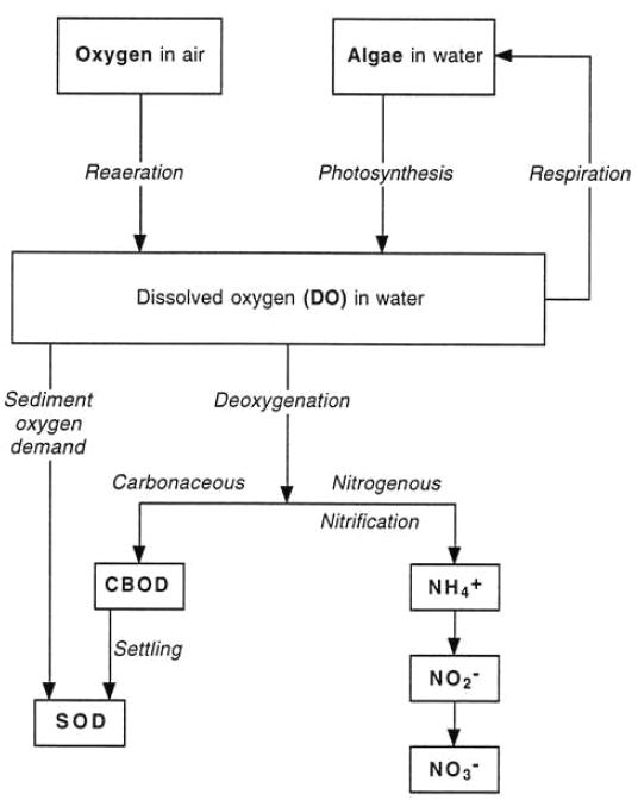Chemical-physical
processes strip waste of pollutants and enable is safe land-filling. Biological processes transform pollutants into
harmless products with the help of microorganisms or plants.
The
chemical-physical and biological treatment of waste mainly includes the
following processes:
Biological treatment processes
The secondary treatment can be defined as “treatment of wastewater by a process involving biological treatment with a secondary sedimentation”. In other words, the secondary treatment is a biological process. The settled wastewater is introduced into a specially designed bioreactor where under aerobic or anaerobic conditions the organic matter is utilized by microorganisms such as bacteria (aerobically or anaerobically), algae, and fungi (aerobically). The bioreactor affords appropriate bioenvironmental conditions for the microorganisms to reproduce and use the dissolved organic matter as energy for themselves. Provided that oxygen and food, in the form of settled wastewater, are supplied to the microorganisms, the biological oxidation process of dissolved organic matter will be maintained. The biological process is mostly carried out bacteria that form the basic trophic level (the level of an organism is the position it occupies in a food chain) of the food chain inside the bioreactor. The bioconversion of dissolved organic matter into thick bacterial biomass can fundamentally purify the wastewater. Subsequently, it is crucial to separate the microbial biomass from the treated wastewater though sedimentation. This secondary sedimentation is basically similar to primary sedimentation except that the sludge contains bacterial cells rather than fecal solids. The biological removal of organic matter from settled wastewater is conducted by microorganisms, mainly heterotrophic bacteria but also occasionally fungi. The microorganisms are able to decompose the organic matter through two different biological processes: biological oxidation and biosynthesis.The biological oxidation forms some end-products, such as minerals, that remain in the solution and are discharged with the effluent. The biosynthesis transforms the colloidal and dissolved organic matter into new cells that form in turn the dense biomass that can be then removed by sedimentation summarizes these processes. On the other hand, algal photosynthesis plays an important role in some cases.
Useful terms
The following terms are the most used in biological treatment processes:
DO: Dissolved Oxygen (mg L-1)
BOD: Biochemical Oxygen Demand (mg L-1)
BOD5: BOD (mg L-1), incubation at 15°C for 5 days
COD: Chemical Oxygen Demand (mg L-1)
CBOD: Carbonaceous BOD (mg L-1)
NBOD: Nitrogenous (mg L-1)
SOD: Sediment Oxygen Demand (mg L-1)
TBOD: Total BOD (mg L-1)

Figure 1.

Figure 2.
Chemical treatment processes
In early wastewater treatment technologies, chemical treatment has preceded biological treatment. Recently, the biological treatment precedes chemical treatment in the treatment process. Chemical treatment is now considered as a tertiary treatment that can be more broadly defined as “treatment of wastewater by a process involving chemical treatment”. The mostly implemented chemical treatment processes are: chemical precipitation, neutralization, adsorption, disinfection (chlorine, ozone, ultraviolet light), and ion exchange.
Pollutants are
removed from aqueous waste through filtration, precipitation or other
techniques like decomposition by microorganisms so that the water can be
introduced into the sewage system. Depending on their composition, the
pollutants removed from the waste are incinerated or deposited in landfills.
Sludge-like waste must undergo repeated dewatering cycles so that it can be
incinerated or deposited in landfills.
Solid waste with high pollutant content may not be deposited in landfills without undergoing pre-treatment. Pollutants can be removed from contaminated excavated material through washing. Organic pollutants are destroyed using thermal treatment or transformed into harmless substances using microorganisms or plants. Waste containing high levels of heavy metals, for example filter ash from waste incineration plants, is solidified using binders like cement. This prevents the leaching of the pollutants. Besides municipal solid waste, faucal sludge can also be discharged into landfills. Well-constructed and maintained landfills are safer than open dumping sites, but even the best sanitary landfill will fill up and, after many years, probably start to leak. Therefore only waste, which cannot be reused further should be disposed of in landfills. To solve current waste problems, prevention of waste in the first place remains a priority. Separation of different types of wastes and reuse is much more sustainable
 |





0 Comments